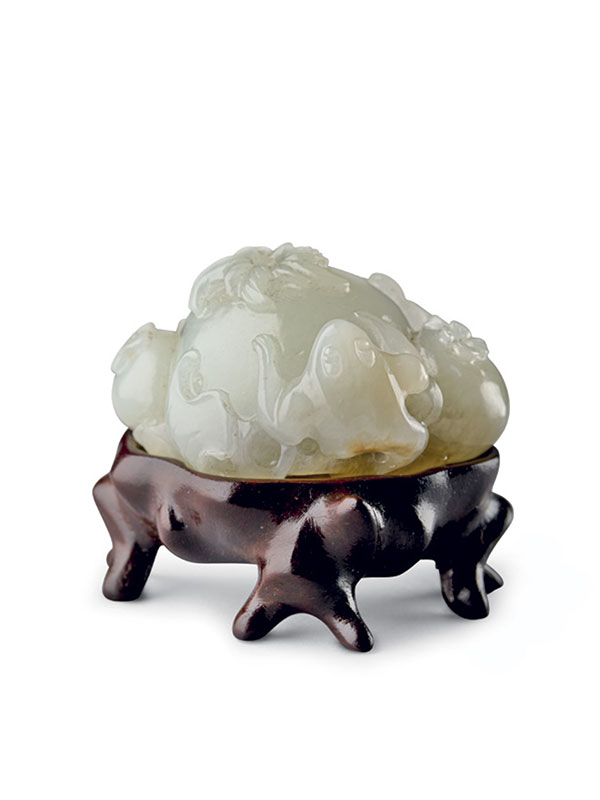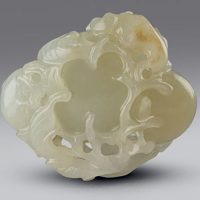Jade cluster of pomegranates with three-legged toad
China, 18th century
A jade cluster of a large pomegranate with two smaller fruits, joined by branches that form the base. A three-legged toad is clambering up one side. The stone is of even, palest celadon tone
Therese Bartholomew states that the three-legged toad (sanzuchan) associated with pomegranates (shilu) signifies the wish “May you have an abundance of sons and wealth”, but it can also provide a deeper meaning, because the two terms can be used as a rebus for the immortal Liu Hai’s name: shilu can be a pun for Liu and chan forms part of the name “Haichan”[1]
Provenance:
Major Henry Ferdinand Stanley MC (1911 – 1997)
Major Stanley was appointed the first director of the Hong Kong Tourist association in 1957.
1 Tse Bartholomew, T., Hidden Meanings in Chinese Art, Asian Art Museum, San Francisco, 2006, 6.41, p. 162-3
- Rawson, J. Chinese Jade from the Neolithic to the Qing, London, the British Museum press, 1995, p. 130
- A Catalogue of the National Palace Museum’s Special Exhibition of Circular Jade, Taipei, 1995, no. 48, pp. 88-9
- Rawson, J. op. cit. no. 4:6, p. 136
清中期/青白玉卧蟾石榴
在中国传统文化中,石榴象征多子,而金蟾象征富足。此雕件兼具两者,有代代富贵之美好寓意。其取材上等青白玉料,雕并蒂石榴两颗及三足蟾一只,石榴蒂叶部分以镂空而成,精巧非常;金蟾则利用玉料本身的黄皮巧雕而成,伏卧于石榴下方,生动可爱。来源:英国Henry Ferdinand Stanley少校旧藏
*Stanley少校曾于港英时期担任香港旅游协会(现香港特区旅游发展局)会长


